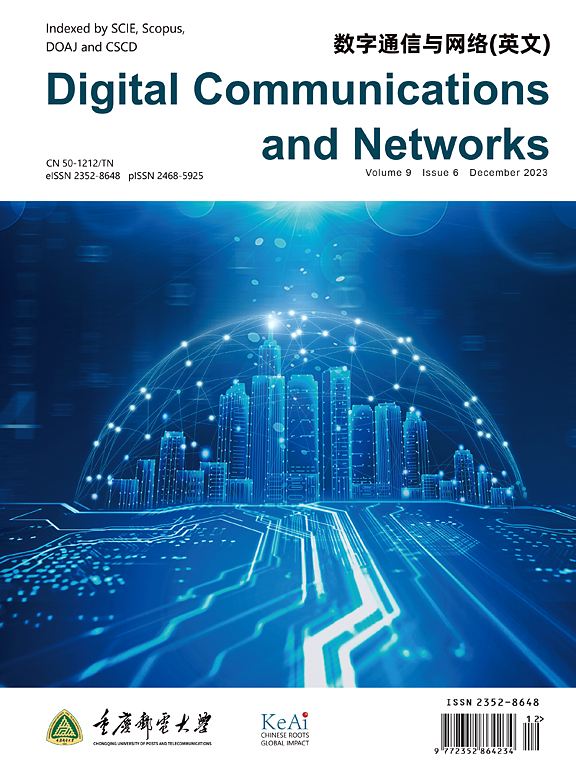通过设计软件定义的射频传感系统,实现老年人跌倒智能无创监测
IF 7.5
2区 计算机科学
Q1 TELECOMMUNICATIONS
引用次数: 0
摘要
全球预期寿命的增加对老年人的安全和福祉,特别是跌倒带来了挑战。虽然跌倒会导致严重的认知障碍,但及时干预可以减轻其不利影响。在这种情况下,对非侵入性、高效监测系统的需求变得至关重要。尽管可穿戴传感器在监测健康活动方面获得了广泛的关注,但它们可能会在长时间使用时引起不适,尤其是对老年人而言。为了解决这个问题,我们提出了一种智能的、无创的软件定义射频(SDRF)传感系统,专门用于监测老年人在日常活动中跌倒。利用深度学习和机器学习的力量,我们的系统处理在常规和秋季活动中产生的无线信道状态信息(WCSI)。通过采用复杂的信号处理技术,该系统捕捉到独特的模式,将跌倒与正常活动区分开来。此外,我们使用统计特征来简化数据处理,从而优化系统的计算效率。我们在使用跑步机的典型家庭环境中进行的实验证明了该系统的稳健性。结果表明,三种人工智能算法的分类准确率分别为92.5%、95.1%和99.8%。值得注意的是,基于sdrf的方法通过软件修改提供了灵活性、成本效益和适应性,避免了硬件检修的需要。这项研究试图弥补基于射频传感的老年人跌倒监测的差距,提供一种将非侵入性优势与深度学习和机器学习的精度相结合的解决方案。本文章由计算机程序翻译,如有差异,请以英文原文为准。
Intelligent non-invasive elderly fall monitoring by designing software defined radio frequency sensing system
The global increase in life expectancy poses challenges related to the safety and well-being of the elderly population, especially in relation to falls. While falls can lead to significant cognitive impairments, timely intervention can mitigate their adverse effects. In this context, the need for non-invasive, efficient monitoring systems becomes paramount. Although wearable sensors have gained traction for monitoring health activities, they may cause discomfort during prolonged use, especially for the elderly. To address this issue, we present an intelligent, non-invasive Software-Defined Radio Frequency (SDRF) sensing system, tailored red for monitoring elderly people's falls during routine activities. Harnessing the power of deep learning and machine learning, our system processes the Wireless Channel State Information (WCSI) generated during regular and fall activities. By employing sophisticated signal processing techniques, the system captures unique patterns that distinguish falls from normal activities. In addition, we use statistical features to streamline data processing, thereby optimizing the computational efficiency of the system. Our experiments, conducted for a typical home environment while using treadmill, demonstrate the robustness of the system. The results show high classification accuracies of 92.5%, 95.1%, and 99.8% for three Artificial Intelligence (AI) algorithms. Notably, the SDRF-based approach offers flexibility, cost-effectiveness, and adaptability through software modifications, circumventing the need for hardware overhaul. This research attempts to bridge the gap in RF-based sensing for elderly fall monitoring, providing a solution that combines the benefits of non-invasiveness with the precision of deep learning and machine learning.
求助全文
通过发布文献求助,成功后即可免费获取论文全文。
去求助
来源期刊

Digital Communications and Networks
Computer Science-Hardware and Architecture
CiteScore
12.80
自引率
5.10%
发文量
915
审稿时长
30 weeks
期刊介绍:
Digital Communications and Networks is a prestigious journal that emphasizes on communication systems and networks. We publish only top-notch original articles and authoritative reviews, which undergo rigorous peer-review. We are proud to announce that all our articles are fully Open Access and can be accessed on ScienceDirect. Our journal is recognized and indexed by eminent databases such as the Science Citation Index Expanded (SCIE) and Scopus.
In addition to regular articles, we may also consider exceptional conference papers that have been significantly expanded. Furthermore, we periodically release special issues that focus on specific aspects of the field.
In conclusion, Digital Communications and Networks is a leading journal that guarantees exceptional quality and accessibility for researchers and scholars in the field of communication systems and networks.
 求助内容:
求助内容: 应助结果提醒方式:
应助结果提醒方式:


